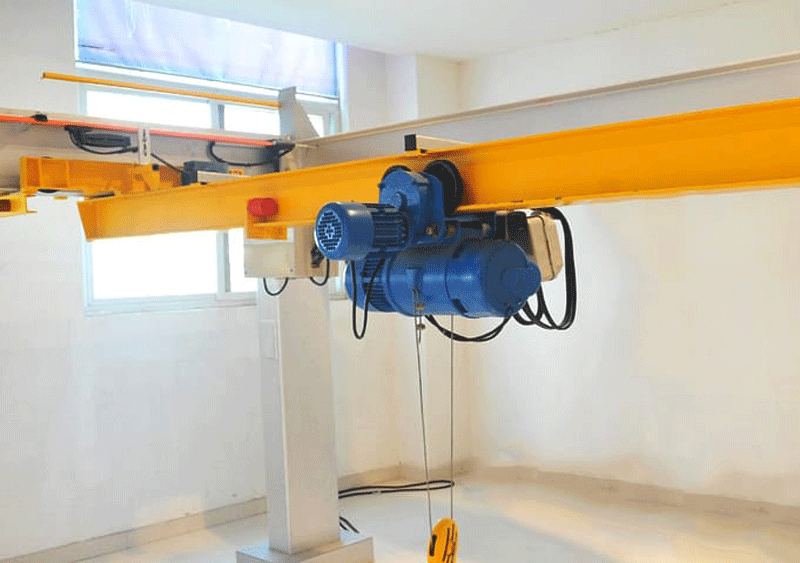The electric hoist is driven by an electric motor and lifts or lowers heavy objects through ropes or chains. The electric motor provides power and transmits the rotational force to the rope or chain through the transmission device, thereby realizing the function of lifting and carrying heavy objects. Electric hoists usually consist of a motor, reducer, brake, rope drum (or sprocket), controller, housing and operating handle. The motor provides power, the reducer reduces the motor speed and increases torque, the brake is used to control and maintain the position of the load, the rope drum or sprocket is used to wind the rope or chain, and the controller is used to control the operation of the electric hoist. Below, this article will introduce some electrical installation of electric hoists and repair methods after the hoist is damaged.
Precautions for electrical installation of electric hoist
The running track of the electric hoist is made of I-beam steel, and the wheel tread is conical. The track model must be within the recommended range, otherwise it cannot be installed. When the running track is H-shaped steel, the wheel tread is cylindrical. Please check carefully before installation. Electrical wiring personnel must hold an electrician’s work certificate to operate. When the power supply is disconnected, perform external wiring according to the usage of the electric hoist or the matching conditions of the hoist.
When installing the electric hoist, check whether the plug used to fix the wire rope is loose. A grounding wire should be installed on the track or the structure connected to it. The grounding wire can be a bare copper wire of φ4 to φ5mm or a metal wire with a cross-section of not less than 25mm2.
Maintenance points of electric hoists
1. It is necessary to carefully check the main control circuit and cut off the power supply of the hoist motor; to prevent the main and control circuits from suddenly supplying power to the three-phase motor and burning the motor, or the hoist motor running under power will cause harm.
2. Next, pause and start the switch, carefully check and analyze the control electrical appliances and circuit conditions inside. Repair and replace electrical appliances or wiring. It cannot be started until it is confirmed that there are no faults in the main and control circuits.
3. When the terminal voltage of the hoist motor is found to be lower than 10% compared to the rated voltage, the goods will not be able to start and will not operate normally. At this time, a pressure gauge needs to be used to measure the pressure.








